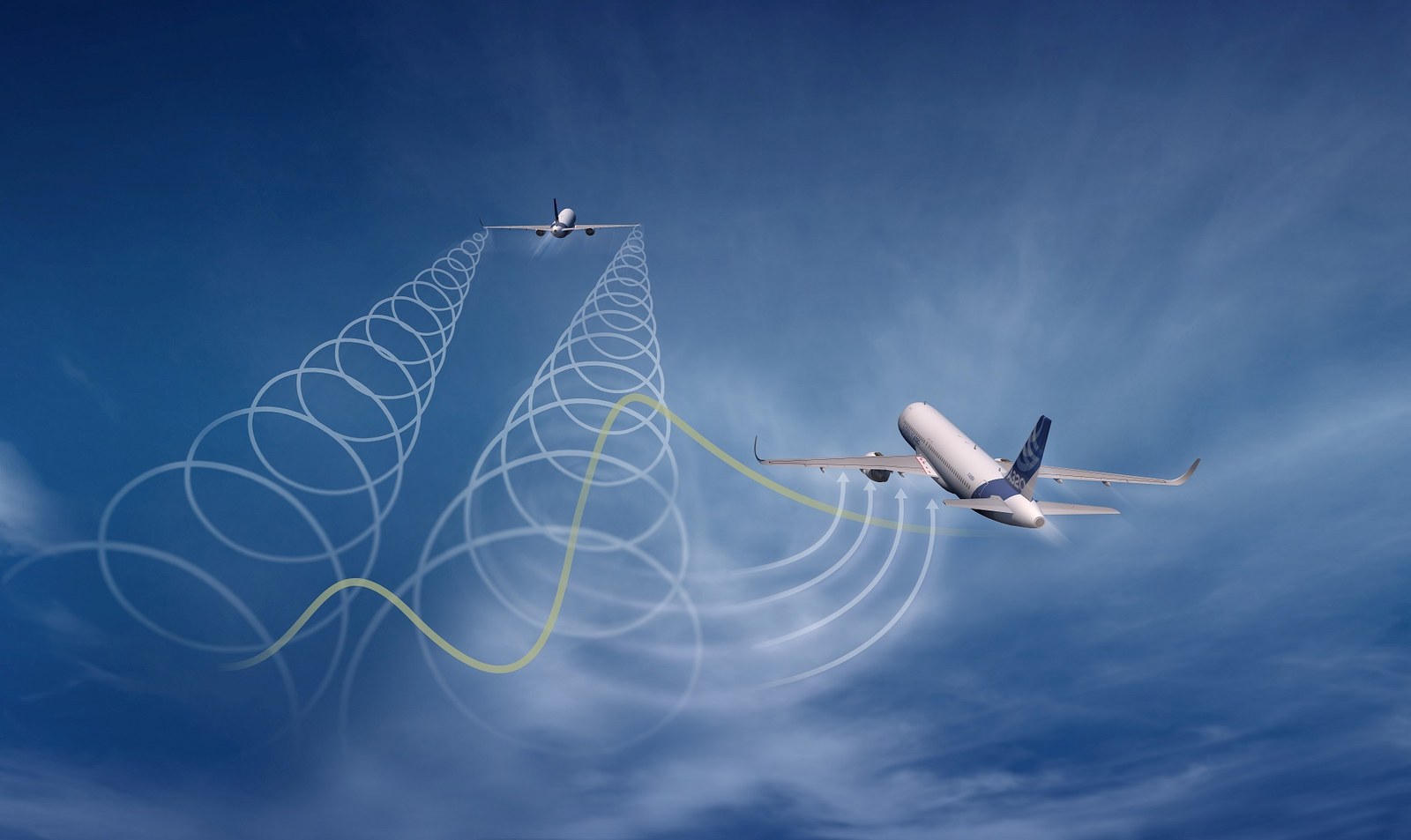Flying in formation to reduce climate impact


- DLR is developing model-based methods and operational concepts for calculating the climate impact of formation flights.
- If applied globally, formation flights have the potential to reduce fuel consumption on long-haul flights by up to five percent and reduce the climate impact by up to 25 percent.
- Focus: Aeronautics, climate-friendly flight, digitalisation
Migratory birds are adept at conserving their energy resources in flight by arranging themselves in V-shaped formations. The birds at the rear essentially 'surf' on the vortices of air created by the bird flying in front, which allows them to save energy during their long journey. The German Aerospace Center (Deutsches Zentrum für Luft- und Raumfahrt; DLR) is investigating the possibility of transferring this principle to commercial aircraft on a large scale. As part of the Formation Flight Impact on Climate (FORMIC) project, researchers used software tools to calculate which long-haul flights are suitable for formations comprising two aircraft. Studies carried out by DLR have shown that formation flight can reduce fuel consumption by up to five percent and the climate impact by up to 25 percent.
Surfing on wake vortices
An aircraft always creates two counter-rotating air vortices, referred to as wake vortices, behind it. During take-off and landing, this turbulence puts other aircraft at risk, so a certain amount of time must elapse between aircraft taking off or landing on the same runway. In cruising flight, however, the wake vortices are usually very stable. During formation flight, a special manoeuvre brings the rear aircraft into the rising air flow created by the aircraft in front, with the autopilot holding the aircraft safely in position and keeping it safely under control. The rear aircraft uses the wake vortex to generate lift. The technical term for this principle is Air Wake Surfing for Efficiency (AWSE). "The rear aircraft is surfing on the wake vortex of the aircraft in front and can reduce its thrust thanks to the energy this provides. The fuel savings achieved in this way in turn lead to a reduction in greenhouse gas emissions," explains DLR Project Manager Tobias Marks.
Fewer clouds, less global warming
That is not the only way that the climate impact of two aircraft flying close together is reduced compared to two independent flights. When the soot produced during fuel combustion is emitted and meets moist air in the atmosphere, it condenses into contrails. In physical terms, these are clouds and they have a climate impact because cloud cover retains heat in the atmosphere. The contrails resulting from two aircraft flying in formation share the water content in the atmosphere. This means that there is less scope for contrails to form than with two aircraft flying separately, reducing the climate impact of the flights. The DLR Institute of Atmospheric Physics uses the AirClim programme to calculate these effects. This determines changes in the global average ground-level temperature due to emissions and contrails.
Flying around the world together
Before the COVID-19 pandemic, there were several thousand flights a day, with different types of aircraft travelling around the globe at different altitudes. Integrating formation flight into the existing global air traffic system therefore represents a challenge. The Institute of Air Transportation Systems has developed the MultiFly software toolkit to identify suitable formation flight partners. For the sake of simplicity, the study initially looked only at long-haul flights with the same type of aircraft. Formation flight offers the greatest potential for fuel savings when used on long-haul flights. The toolkit calculates where two formation partners meet, which route they will fly together and where they will eventually part ways to each head for their own destination airport. The decisive factor for operational success is finding flight pairings between aircraft that can fly together for as long as possible despite departing from different locations. MultiFly also calculates the expected corresponding fuel and emissions savings. "By considering global air traffic, the use of formation flight could help us achieve a large positive effect for climate protection, and it would require relatively little effort," explains Marks.
Research teams from DLR are working on the FORMIC project alongside the Hamburg University of Technology and RWTH Aachen University. The project is funded by the German Federal Ministry for Economic Affairs and Energy (Bundesministerium für Wirtschaft und Energie; BMWi).
